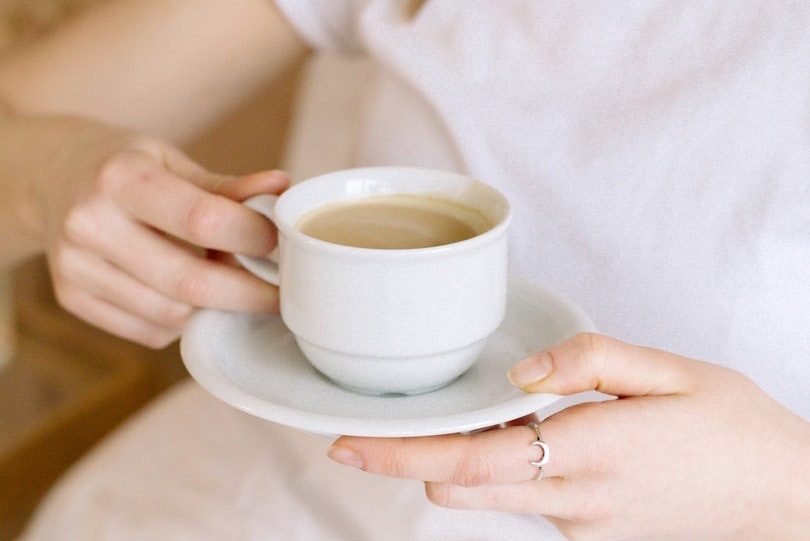
Many people have a cup of coffee each morning and would have a difficult time starting their day without it. Caffeine is the primary ingredient that provides that energy boost, and many people notice a similar boost after eating chocolate, which they often assume also contains caffeine. However, while similar, the active ingredient in cocoa is theobromine. So, which one is better? Keep reading as we take a closer look at both these ingredients and discuss their pros and cons.

Overview of Theobromine
What Is It?
Theobromine is an ingredient that you can only find in cocoa. It’s an alkaloid similar to caffeine that acts as a stimulant in the body. If you purchase it as a separate ingredient, it is usually a white, crystalline, water-insoluble powder that doesn’t taste good.
What It’s Good for
Doctors can use theobromine to treat several health problems. For example, it can widen the blood vessels to facilitate blood flow, which can help reduce high blood pressure and relieve pressure on the circulatory system. In addition, it can stimulate the heart and function as a diuretic. Some people prefer theobromine to caffeine when looking for a cognitive boost or increased physical energy.
Risks
Unfortunately, large doses of theobromine can lead to several side effects, including sweating, headache, and nausea. Some people may experience a sudden rapid heartbeat, especially after consuming large quantities of dark chocolate. However, the biggest problem with theobromine is its danger to your pets. Theobromine is why your dog cannot eat chocolate because they cannot metabolize it, and the results can be fatal. It’s even more dangerous for cats because they’re smaller and need less to be affected.
- Several uses in the medical field
- Helps provide a cognitive boost
- Helps increase physical energy
- Extremely dangerous to pets
- May lead to a sudden rapid heart rate
- Can lead to headaches, sweating, and nausea

Overview of Caffeine

What Is It?
Caffeine is a stimulant that you primarily find in coffee beans and tea leaves, though it is also present in many other plants, albeit in much smaller quantities. The caffeine is extracted by steeping the beans or leaves in hot water. The longer you let it steep, the stronger it will be and the more caffeine it will contain. Roasting also makes the caffeine more accessible, and you will find more caffeine in a dark roast than in a light one.
What It’s Good For
Caffeine is the relatively safe way that many of us get the energy that we need to start our day. Caffeine quickly helps us feel more alert and energetic and to stay focused. Many companies are also beginning to use caffeine in their skincare products because of its ability to tighten skin and reduce swelling.
Risks
Unfortunately, caffeine has several health risks, especially when you consume more than the recommended 400 mg per day, which equals 3 or 4 standard cups of coffee that you might brew at home. Exceeding this limit often leads to people feeling nervous and easily irritated. Tremors and even muscle spasms can occur, and many people find it difficult to sleep at night. Internally, caffeine acts as a diuretic that can lead to gastrointestinal problems like diarrhea and can facilitate the production of kidney and bladder stones. An increased heart rate can increase blood pressure, putting strain on your cardiovascular system. Caffeine is also addictive, so it can lead to more problems when you try to stop using it.
- Quick boost of energy
- Relatively safe if used in moderation
- Tightens skin and reduces swelling
- Easy to obtain
- A long list of health risks if it’s abused
- Addictive

When Should I Use Each?

Theobromine
Many people choose to use theobromine in place of caffeine when they need a quick boost in cognitive abilities or physical energy. The effect is similar to that of caffeine but doesn’t last as long, so it’s perfect for someone who needs an occasional boost of energy but doesn’t want to worry about becoming addicted. It can also help give you the boost that you need in an environment where you can’t consume a liquid beverage. However, pure theobromine powder is harder to find than caffeine, and chocolate has other ingredients that you may not want.
Caffeine
Caffeine is readily available and extremely popular. It can lead to several health problems, but if you consume it in moderation, it is relatively safe and can provide you with the energy that you need without worry. The downside is that it is addictive, and after you drink it every day for several months, you will experience minor symptoms like headache, irritability, and nausea for a few days if you suddenly stop. Choose caffeine when you need an energy boost more frequently.
- Occasional boost
- Don’t have pets
- Don’t like coffee or tea
- Frequent energy boost
- Household pets

Conclusion
Theobromine is an extremely dangerous ingredient to have around your home if you have pets. However, it’s a relatively safe minor stimulant for humans because it doesn’t have many of the problems associated with caffeine. It also has several uses in the medical field, helping to treat things like high blood pressure, which caffeine worsens. However, caffeine is much more popular and easier to find. The effects are more pronounced and last longer, so it’s likely the option that you’ll choose when facing a large task on a long day.
Featured Image Credit: Left – Theobromine (Kondor83, Shutterstock) | Right – pollawut464, Shutterstock)













